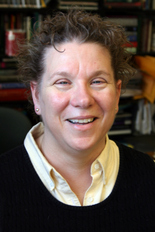
When Gayle Woloschak, PhD, professor in radiation oncology and radiology, arrived at Northwestern University Feinberg School of Medicine a decade ago, she wanted to bring a national archive with her.
A decision by the Department of Energy (DOE) three years into her professorship turned that goal into a reality, with the establishment of the Northwestern University Radiation Tissue Archives (NURA).
Believed to be the world’s largest collection of irradiated animal tissue samples, NURA has continued to grow, recently adding samples from tests conducted at the University of Utah and University of Albuquerque,-New Mexico. The DOE also recently decided to move samples from the Pacific Northwest National Lab in Richland, Washington, to the Woloschak Lab, here.
The mission of the archives is to collect and disseminate tissues and datasets from experiments sponsored by the U.S. government over more than four decades, beginning in the 1950s. The tissue samples have been exposed to various doses and qualities of radiation, dose-rates, and conditions of radiation, with sections available upon request to investigators from around the world looking to explore the effects of radiation.
“We believe this information is extremely valuable because costs prohibit repetition of such large-scale and long-term animal studies,” said Bharat Mittal, MD, chair of the Department of Radiation Oncology.
The DOE and other agencies sponsored a series of long-term studies to examine the effects of radiation exposure after the end of World War II. Among these studies was the Janus program conducted from 1969 to 1992. During the past 40 years, data from these tissue samples have been investigated using different statistics approaches, resulting in the extrapolation of mortality data between animals and humans.
However, “The tissues are old and not suitable for studies of mRNA or other unstable molecules,” said Woloschak, whose lab is using the samples as part of a DOE program project to study the effects of radiation on mitochondrial DNA and microRNA.
Groups at Emory University in Atlanta, the University of Chicago, and in Germany are also using tissue samples from NURA to conduct research.
“New statistical and methodological approaches are now available that make re-analyses of these datasets interesting and useful, and new questions have arisen since this work was initially performed that will lead to new uses of old data,” Mittal said. “With rising interests in radiation effects, including the development of radiation countermeasures programs at the National Institutes of Health and the Defense Threat Reduction Agency, the interest in anti-terrorism approaches is an inherent value of the data and tissue banks.”
Although NURA may be the largest collection of irradiated animal tissue samples in the world, Woloschak continues to work to establish collaborative approaches with archives in Japan and Russia. Her efforts were recently written about on May 9 in Nature. A member of the advisory board for Sustaining Access to Tissues and Data from Radiobiological Experiments (STORE), a large European Union tissue project, Woloschak visited scientists earlier this year at the South Urals Biophysics Institution (SUBI) in Siberia to discuss some of the samples obtained from STORE.
“With this archive and database we envision Northwestern becoming a center for the use and distribution of irradiated tissues throughout the world,” Mittal said. “NURA will enhance research in the field of radiation biology related to countermeasures and counterterrorism efforts as well as studies related to a basic understanding of radiation toxicities associated with radiation therapy exposure.”






